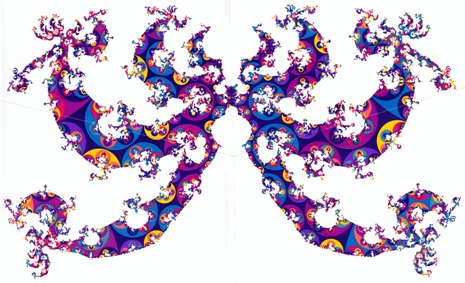Tomaschitz, R. (1996). Topologically induced chaos in the universe, in: Proceedings of the Seventh Marcel Grossmann Meeting (Stanford, July 24-30, 1994, R. T. Jantzen, G. Mac Keiser, eds.), World Scientific, Singapore, 1996, pp. 950-951.
Abstract (CDS, SAO/NASA ADS)
Some topological effects that arise in an infinite and multiply connected universe are pointed out: the appearance of a chaotic nucleus, topologically induced particle creation and CP violation, and the temperature anisotropy of the background radiation.
|
Title: |
|
Topologically Induced Chaos in the Universe |
|
Authors: |
|
Tomaschitz, Roman |
|
Affiliation: |
|
AA(Department of Physics, Hiroshima University, Higashi-Hiroshima 739-8526, Japan) |
|
Publication: |
|
Proceedings of the Seventh Marcel Grossman Meeting on recent developments in theoretical and experimental general relativity, gravitation, and relativistic field theories. Proceedings of the Meeting held at Stanford University, 24-30 July 1994. Edited by Robert T. Jantzen, G. Mac Keiser, and Remo Ruffini, River Edge, New Jersey: World Scientific, 1996., p.950-951 |
|
Publication Date: |
|
00/1996 |
|
Origin: |
|
|
|
Keywords: |
|
open Robertson-Walker cosmology, relativistic chaos |
|
Bibliographic Code: |
|

Fig. 1. The horizon at infinity of the Poincaré half-space H3, the covering space of the spacelike slices (F,Γ). The polyhedral tiling Γ(F) of H3, induces a tiling at infinity which is depicted here. From the fractal limit set Λ(Γ), one can easily determine the chaotic or nearly chaotic trajectories, which shadow each other over long times. Their lifts have initial and end points in or close to Λ(Γ). Projecting them into the 3-space (F,Γ), one obtains the chaotic nucleus. full size image
description: Roman Tomaschitz (1996) Topologically induced chaos in the universe, in: Proceedings of the Seventh Marcel Grossmann Meeting (R. T. Jantzen, G. Mac Keiser, eds.), World Scientific, Singapore, pp. 950-951.
Keywords: open Robertson–Walker cosmology with multiply connected hyperbolic 3-space, relativistic chaos, mixing and shadowing in the chaotic center of the universe, parity violation by topological self-interference, topological evolution and particle creation, global metrical deformations of the open spacelike slices, temperature fluctuations in the cosmic microwave background, horospherical eikonal and geodesic flow on open hyperbolic 3-manifolds, Poincaré half-space, universal covering projection, polyhedral tessellation of hyperbolic space, fractal limit sets of Kleinian covering groups, chaotic world lines
download full-text article (scanned PDF, 1.0 MB)